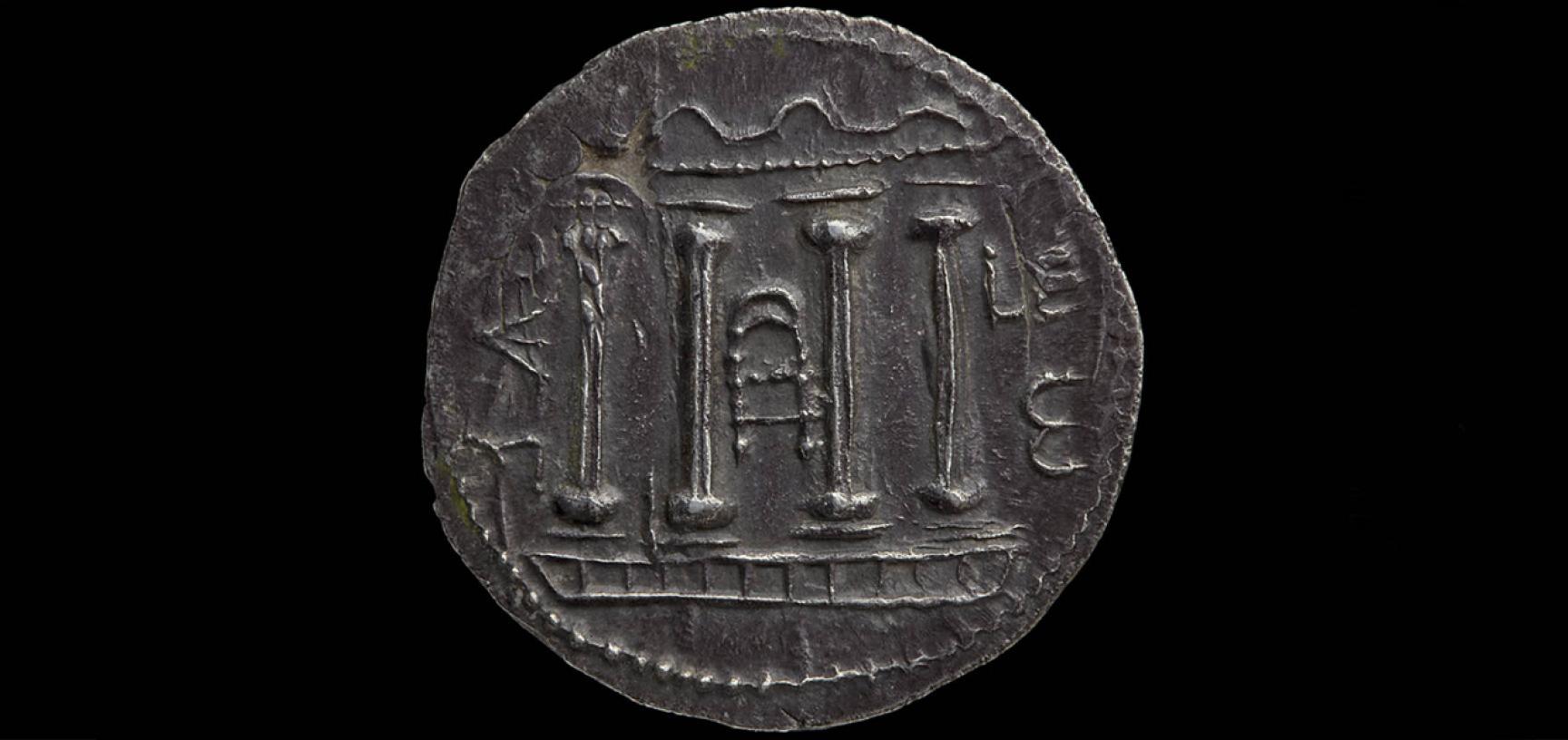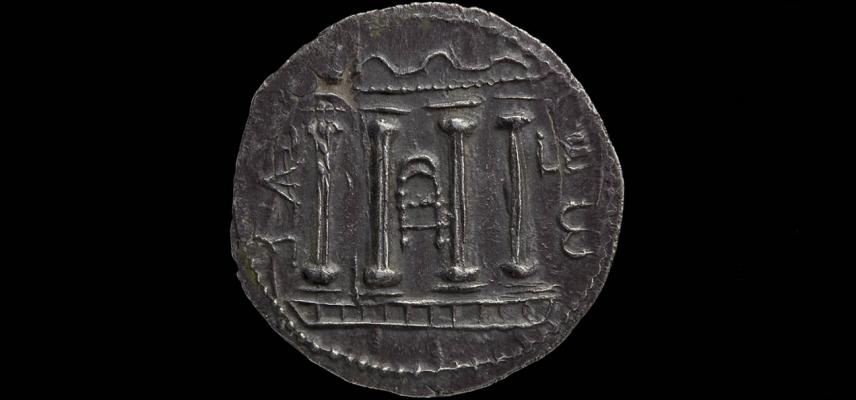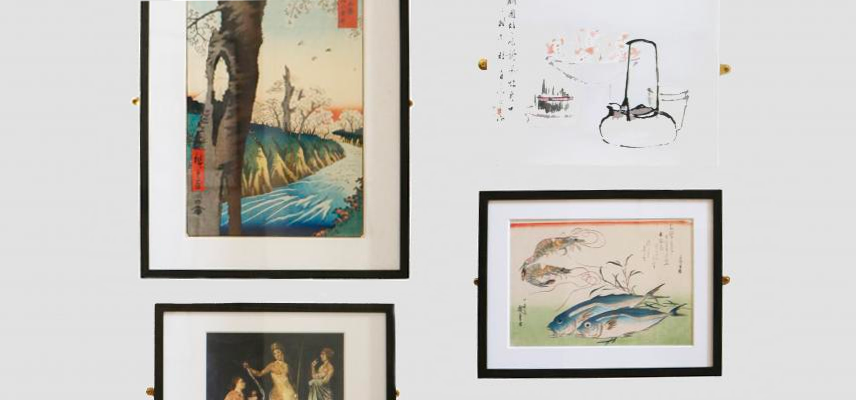TETRADRACHM, JUDAEA
An image of the destroyed Temple
This silver coin was issued when part of the Jewish population in Judea revolted against Roman rule, in AD 132, under the leadership of a man named Simon ben Kosiba. He was thought by Jews of the time to be the promised ‘Messiah of Israel’, and was given the surname Bar Kokhba, ‘Son of a Star’, as fulfilment of a prophecy: ‘there shall come a Star out of Jacob, and a Sceptre shall rise out of Israel’ (Numbers 24:17). In AD 135 Bar Kokhba was defeated, and the Roman emperor Hadrian expelled Jews from Jerusalem.
This tetradrachm was made by overstriking a Roman coin. It is possible to see traces of the portrait of the Roman emperor Trajan (r. AD 98–117) on the reverse. The legends on the coin are in Hebrew; the obverse reads ‘Simon’ and the reverse ‘for the freedom of Jerusalem’. Even in the 2nd century AD this alphabet was considered archaic and was rarely used. The obverse depicts the Temple of Jerusalem, which was destroyed by the Romans during the first Jewish revolt in AD 70. With Bar Kokhba as their leader, the Jews hoped to rebuild the Temple, which was central to the worship of the God of Israel. The reverse represents the palm branches (lulav) and a citrus (etrog) used for the feast of Tabernacles (Sukkot), during which the Jews were commanded to make a pilgrimage to the Temple (following Leviticus 23:40).
Tetradrachm
Judea
AD 132–135
Silver
27 mm
Purchased, 1947
View on our online Collection Online Site: HCR6354
License this image - visit the Ashmolean Image Library










